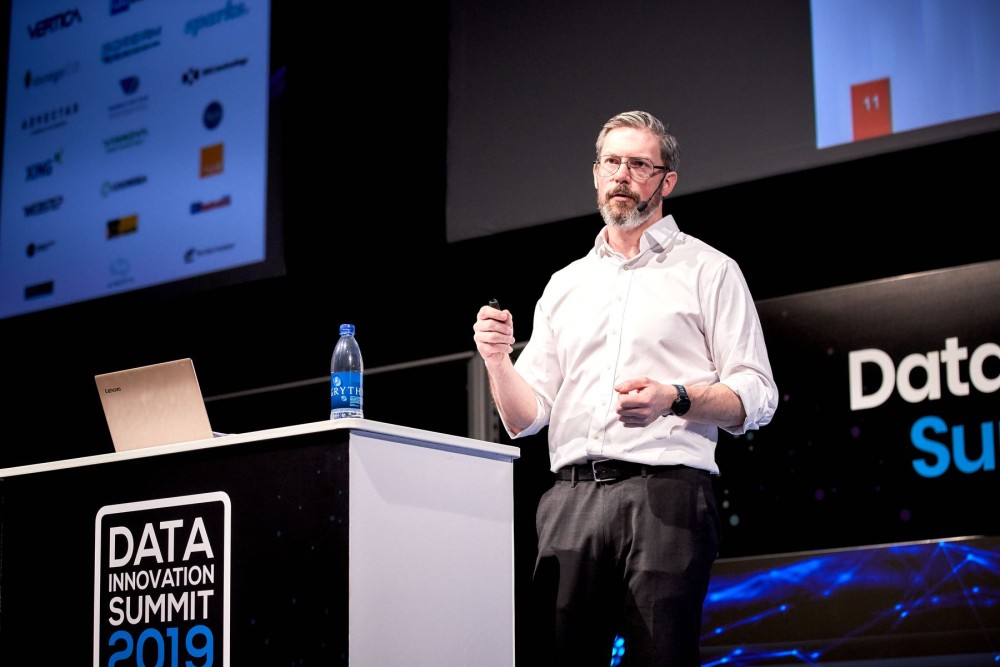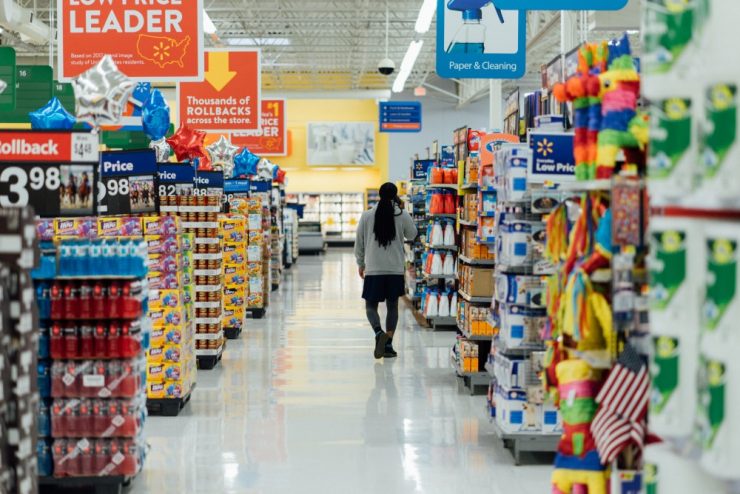One may wonder at hearing the words grocery retailer, data-driven and innovation pronounced in a single sentence, but ICA Gruppen – the leading grocery retailer – is breaking new ground with data and analytics.
The start of the data-laden road
Carolina Steinmetz Singer, Director Analytics and Daniel Ågren, Director Data & Analytics Technology at ICA Sweden (the largest company under ICA Gruppen) told their transformation story of becoming a data-driven organisation with self-serving analytics in their presentation at the Data Innovation Summit.


It was 2017 when they decided that it was high time they stopped talking about becoming a data-driven organisation and just start being one.
But their situation at the beginning wasn’t shiny at all. Their analysts were based in silos, their data was stored in silos and they didn’t have clear data and analytics strategy. The data analysts’ work was mainly focused on pulling data and making extracts, Carolina lays out.
The overall goal was to educate the business people about data so they can base their decisions on it and the analysts can focus on more advanced problems. They relied on self-serving analytics as the means that helped them empower their people on the data-driven journey.
Daniel Ågren says that their success was due to the fact that they started the transformation from an enterprise perspective from the very first day, involving all business units within the company, working closely with IT and analytics, while at the same time focusing on all three aspects of people, technology and processes.


People
The most important things for a data-driven transformation is to have the people on board. ICA Sweden divided their employees into three groups depending on a common interest: Business, Analytics and IT. One key lesson from this was that usually, IT is apprehensive about giving up control over the data. On the other hand, analytics might be overwhelmed to take control of the data, as it’s a big responsibility. And Business for their part needed to get over the fear of data. But having a clear picture of processes and purpose of all they were doing, while practising communication among all three groups helped to prepare analysts to do more value-added tasks.
Technology and data
When it comes to technology, ICA Sweden’s focus was on performance and strategy. But before implementing any enterprise-wide solution, it’s crucial to solve any legacy data warehouse and data structure issues that might affect performance. In relation to data strategy, they established which datasets need to be available to analysts and other use cases.




Processes
ICA Sweden ensured efficiency and governance in the processes, states Daniel. The processes were as efficient as possible to get the most value out of the use cases. They designed the process as they went along and iterated together with Business, Analytics and IT. All unnecessary process checkpoints that would’ve slowed them down were avoided as much as possible. For governance, ICA Sweden invested in educating data managers on the tools and responsibilities and introduced a process for certification of the data that is safe to be spread across the organisation. Daniel also mentions that they introduced a data catalogue in which all different datasets, KPIs and ownership were described.


The changes underway and initial results
The initiative of turning ICA Sweden into a data-driven organisation also changed how departments work with one another. “We are very proud of this journey. We did it together and Business, IT and Analysts never worked so close before.” Carolina joyfully states. The transition is still ongoing, but the amount of change they achieved is tremendous.
They are on the way to abandon spreadsheets and moved to a self-serving analytics dashboard. They are seeing tangible results in that analysts are getting barely any ad-hoc requests to pull data and create extracts. And they are experiencing overall data maturity and literacy among users.
ICA Sweden has seen the value and possibility of data and analytics and has made it one of the main focus areas to develop.
From an idea to innovation
Data and innovation are journeys that go hand in hand. But we are aware of the painstaking work of taking an idea into production.
The first condition for running innovation is having a stable and reliable foundation that will support it.
Olof Granberg, Director of Big data and Advanced Analytics Technology at ICA Gruppen talked about how ICA Gruppen laid a foundation for innovation and delivered business value from innovation, while at the same time allowing the innovations to fail, because, in order to win, one also has to lose. “Failing will be part of your daily operations and business, but these failures provide lessons,” emphasises Olof.


When it comes to innovation, ICA Gruppen abides by two tenants:
1) In order to innovate, they run a lot of trials, so they can fail often, fast and cheap and ultimately find the golden nugget that brings business value.
2) Innovation doesn’t create value until is part of the business process.
The first step is the preparations for the innovation which includes establishing privacy, legal questions, what data can be used for it and how the outcome of the innovation can be utilised. Also, they secure the data and all necessary resources and tools before starting the trials for the innovation.


Challenges with innovation
Nevertheless, the journey to innovation is not a smooth one, there are a lot of challenges along the way. Olof lists several of them:
1) Too long time to get from idea to innovation phase. Legal and privacy questions are dragged into full-blown ongoing discussions. And it’s not clear who decides on the risk and the benefits.
2) Preparing the data to be usable. The enterprise data warehouse approach Olof mentions is common practice with organisations but take too much due to the great number of stages.
3) Having no proper place to innovate. As working with a fraction of the data warehouse is not a safe option, people usually reach out for the cloud to do innovation. But oftentimes, the cloud is not a part of the innovation architecture and draws in legal discussions.
4) Innovation is usually done in a silo. The development and maintenance teams are usually working separately from the innovation team, which creates friction and architecture rebuild.
5) This much time spent on preparation allows for a small number of trials on which large bets are placed.


Building a foundation for innovation
On the contrary, the optimal scenario for innovation includes:
- Shorter preparation phase
- Fast approvals
- Dumps of data
- Space and tooling in place.
A shorter preparation phase allows for more trials to take place and they carry less risk. Going from idea to operation is also much faster and with less friction.
To get to this stage, we need to build the foundation, which consists of three major building blocks:
- Data governance and use case approvals – shorter preparation phase, while still maintaining control, understanding which use cases and data are allowed to be used and what we can do with the outcome. Roles, responsibilities, processes and approval for use cases need to be established with an iterative approach.
- People – creating cross-functioning teams with data scientists, data engineers, business experts, data experts, business translator to establish a common language. Innovation is a team effort and collaboration between all people speeds it up.
- Data management – Data availability is one of the things that drag on innovation. To solve it, we need to have all the data catalogued, know who should give approval and the level of data accuracy, have tools and resources in place.
To sum up, the key is to go from spending a lot of time on the preparation phase where we can run only few trials with big bets and it takes a lot of time to operationalise to a scenario where we run trials more often with a lot of wins and small painless failures. This scenario presents a proper foundation for more innovation that can be used in the business and deliver real business value.














Add comment